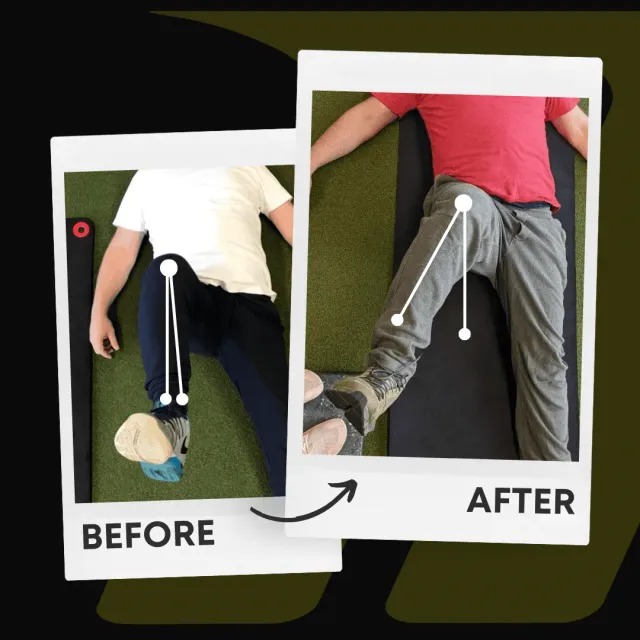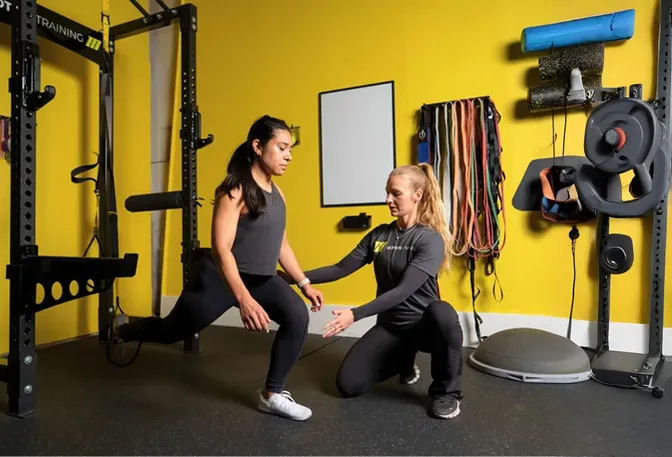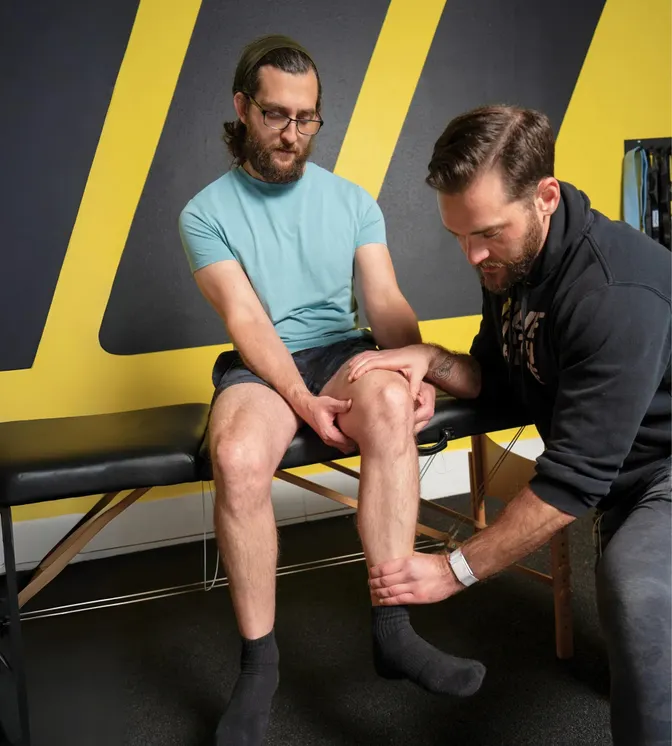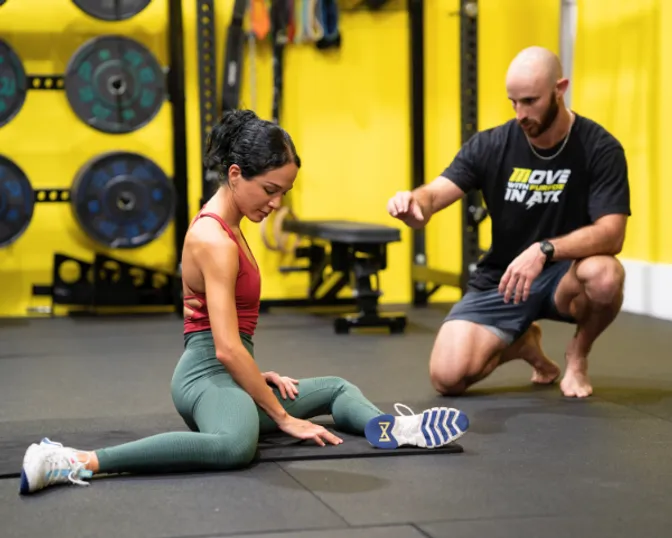Mobility and Stretching in Austin: Traditional vs FRC Methods
August 6, 2025 | Stretching
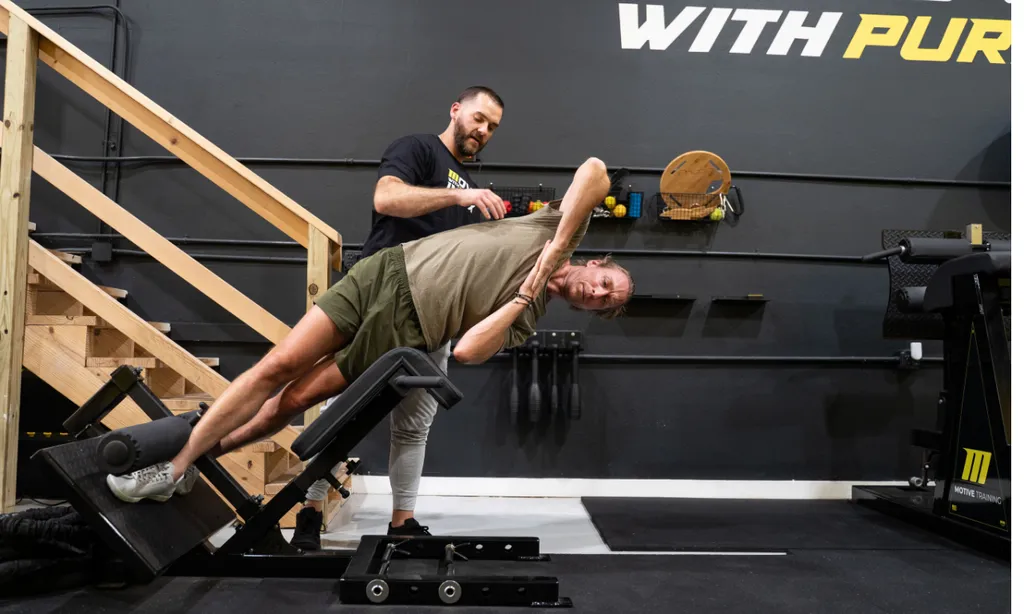
Introduction to Mobility and Stretching
Stretching and mobility work have become buzzwords in the fitness industry—but what do they actually mean, and are they the same? Many people searching for mobility and stretching in Austin are told to stretch more to fix their tight hips, achy backs, or stiff shoulders. It’s well-meaning advice, but often incomplete.
Traditional stretching focuses on improving flexibility, but flexibility alone doesn’t guarantee better movement. It also doesn’t mean you can control the new range of motion you’ve gained. That’s where mobility training comes in.
Mobility refers to your ability to move a joint actively through its full range of motion with control. While flexibility can be part of the equation, mobility work goes deeper—training your nervous system and connective tissue to function better. At Motive Training, we don’t rely on passive methods to create change. We use Functional Range Conditioning (FRC) to build long-term joint health and control.
This article compares traditional stretching methods with FRC, highlighting why it’s the better option for most people looking to move better and feel better.
Traditional Stretching Methods
Static Stretching
Static stretching involves holding a muscle in a lengthened position for a set amount of time, typically 15 to 60 seconds. It’s common in warm-ups, cool-downs, and yoga classes. The goal is simple: increase muscle length and decrease tension.
While it can feel good in the moment, static stretching has limits:
- Results are temporary unless repeated frequently.
- It doesn’t build control or coordination in new ranges.
- It can reinforce poor posture or movement habits if applied without assessment.
It’s often used as a general tool without addressing the specific joints or positions that actually need attention. That’s why many people stretch daily and still feel tight.
For those dealing with persistent tightness or discomfort, a more targeted approach is needed—one that includes joint-specific control and strength.
Dynamic Stretching
Dynamic stretching incorporates active movement. Examples include walking lunges, leg swings, and arm circles. It’s useful for warming up, raising body temperature, and activating muscles in preparation for movement.
Dynamic stretching offers several benefits over static methods:
- It mimics athletic movements and preps the nervous system.
- It encourages coordination and rhythm.
- It works through a broader range of motion than static holds.
But it still falls short in key areas. It often skips over the individual joint mechanics that cause dysfunction in the first place. While it helps prepare the body for activity, it doesn’t resolve movement restrictions or end-range weakness.
Mobility issues caused by joint limitations or structural imbalances won’t be fixed with generic movement patterns. To fix those, you need to train the joint directly.
Functional Range Conditioning (FRC)
Principles of FRC
Functional Range Conditioning is a joint training system built to improve usable range of motion. Unlike traditional stretching, it emphasizes active control and tissue adaptation at the joint level. FRC practitioners use scientific methods to strengthen the joint capsule, connective tissue, and surrounding musculature in a coordinated way.
Core elements of FRC include:
- Controlled Articular Rotations (CARs): Daily joint rotations designed to maintain and assess joint function. Learn more about CARs.
- PAILs and RAILs: These techniques apply progressive and regressive isometric loading at end ranges to build strength where you’re weakest. Explore how we use PAILs/RAILs.
- Joint-Specific Assessments: We begin with a Functional Range Assessment to identify where you lack control and develop a plan accordingly.
- End-Range Strength: New ranges of motion are trained through resistance, making them more resilient and usable.
Unlike passive stretching, FRC doesn’t just increase flexibility—it gives you more control, strength, and awareness inside that new range. That’s why it’s become a staple inside our mobility training programs in Austin.
Benefits of FRC Over Traditional Methods
FRC produces tangible outcomes that stretching alone cannot:
- Lasting mobility improvements: Because you’re training strength and control at the joint level, results are durable and functional.
- Pain relief: Many clients experience a reduction in chronic pain by restoring proper joint mechanics. Read more on how FRC unlocks pain-free living.
- Injury prevention: By strengthening connective tissue and reinforcing vulnerable end ranges, FRC creates joints that are less prone to tweaks and strains.
- Improved athletic performance: FRC directly supports movement patterns needed for lifting, running, swimming, climbing, or sport-specific activities.
- Greater body awareness: Practicing CARs and other FRC techniques sharpens proprioception—your brain’s map of your body in space.
It’s the difference between stretching for comfort versus training for control. And in a city like Austin, where people are active year-round, having durable mobility matters.
Comparing Traditional Methods with FRC
| Category | Static Stretching | Dynamic Stretching | Functional Range Conditioning |
|---|---|---|---|
| Primary Goal | Passive muscle length | Warm-up/prep | Joint-specific mobility + strength |
| Duration of Results | Short-term | Short-term | Long-term |
| Addresses Joint Control? | No | Partially | Yes |
| Builds Strength at End Range? | No | No | Yes |
| Pain-Reduction Potential | Low | Moderate | High |
| Best Use | Cool-down or relaxation | Pre-workout preparation | Improving mobility, performance, pain resilience |
Traditional stretching has its place in certain routines—but if you’re trying to solve a chronic issue, expand movement potential, or prepare your joints for real-life demands, FRC is the more comprehensive approach.
Conclusion: Choosing the Right Method for You
Stretching might offer short-term relief, but it rarely solves the root cause of stiffness, pain, or poor movement. If your goal is long-term joint health, better performance, or more freedom in how you move, then Functional Range Conditioning is worth exploring.
It’s what we use every day with our clients—from beginners to athletes, from people recovering from injuries to those optimizing how they move. You don’t have to settle for generic warm-ups or outdated advice. You can train smarter, move with intention, and feel the difference where it matters most—inside your joints.
Written by
Brian Murray, FRA, FRSC
Founder of Motive Training
We’ll teach you how to move with purpose so you can lead a healthy, strong, and pain-free life. Our headquarters are in Austin, TX, but you can work with us online by signing up for KINSTRETCH Online or digging deep into one of our Motive Mobility Blueprints.
